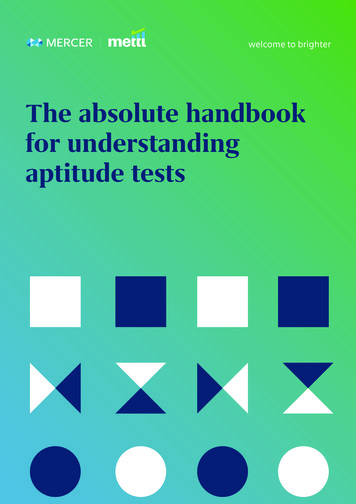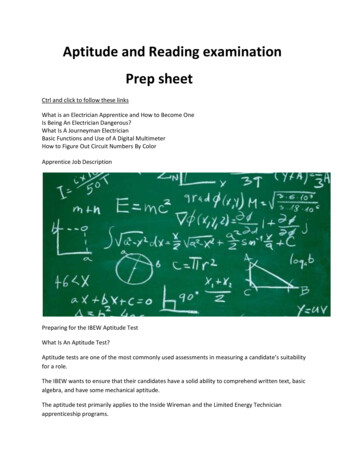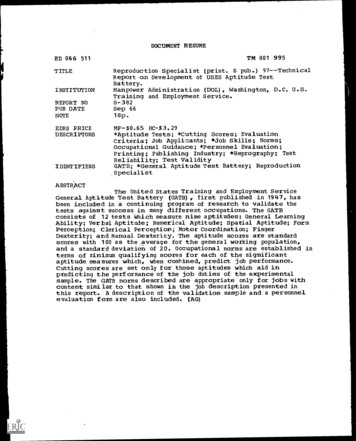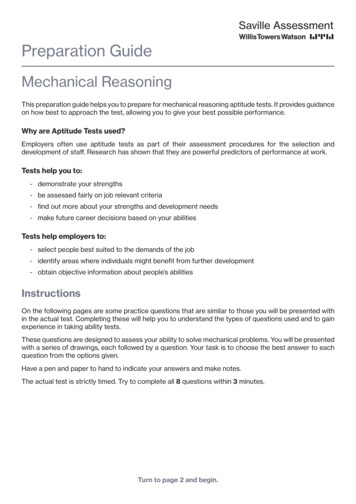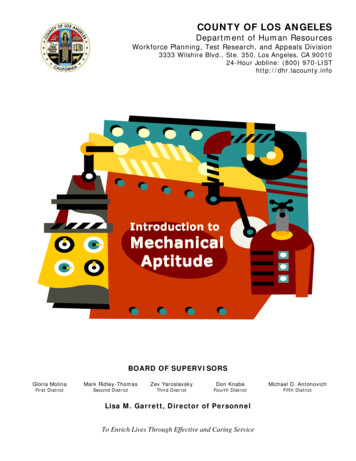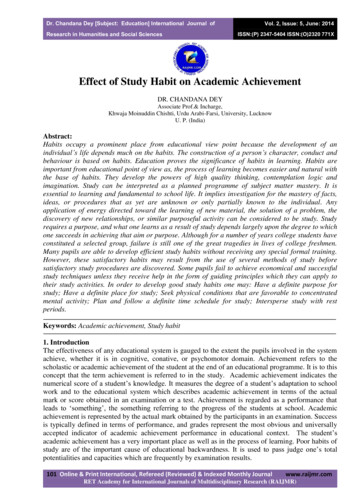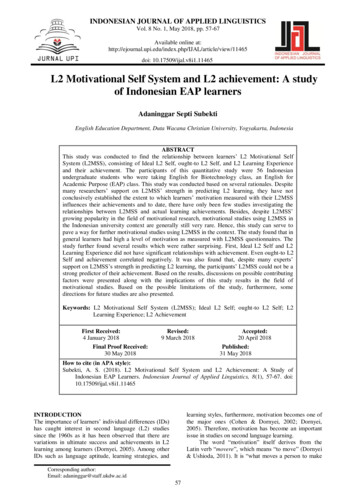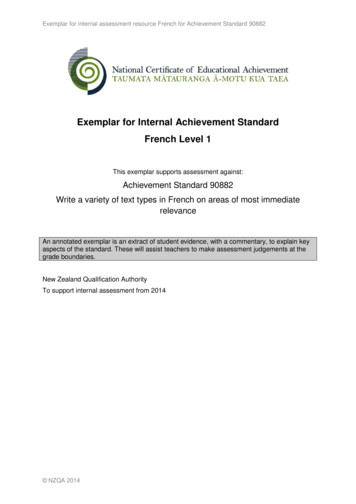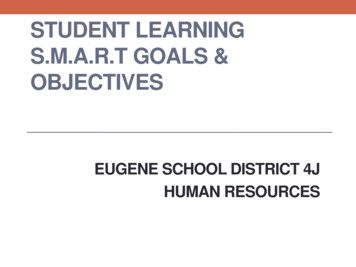
Transcription
Aptitude vs. Achievement Achievement tests measure what you already have learned.Examples include a literacy test, a driver’s license exam, and a finalexam in a psychology course. Aptitude tests attempt to predict your ability to learn new skills. The SAT, ACT, and GRE are supposed to predict your ability to dowell in future academic work.If the SAT is anaptitude test,should itcorrelate withIQ?IQSAT scores (verbal quantitative)1
Standardized Test A test that has been piloted on a similar population of peopleas those who are meant to take the test; individuals arecompared against the norms of the sample population.2
David Wechsler’s Tests:Intelligence PLUSThe Wechsler AdultIntelligence Scale(WAIS) and theWechsler IntelligenceScale for Children(WISC) measure “g”/IQand have subscores for:verbal comprehension.processing speed.perceptual organization.working memory.3
Re-Standardizationand the Flynn EffectRe-Standardization: Re-testing a sample of the generalpopulation to make an updated, accurate comparison group,in case people are smarter than they used to be when thetest was first made.The Flynn Effect:Performance onintelligence testshas improved overthe years,worldwide.4
Stability of Intelligenceduring Aging:Which type of intelligence?Based on this chart,at what age mightyou do best atcompleting acrossword puzzlequickly?5
Fluid and Crystallized IntelligenceFluid intelligence refers tothe ability to think quicklyand abstractly.Crystallized intelligencerefers to accumulatedwisdom, knowledge,expertise, and vocabulary.6
Stability of Intelligence Test ScoresOver the LifespanPushing toddlers to learn does not seem to help much. Onlyby age four is a child’s performance on intelligence tests apredictor of future performance on intelligence tests.Based on theresults of alongitudinal studydepicted in thischart, doesintelligence testscore at age 11predictintelligence testscore at age 80?7
Intelligence and LongevityIn a Scottish longitudinal study, 11-year-olds with higherintelligence test scores lived longer and more independentlyand were less likely to develop Alzheimer’s Disease.In a study of nuns ,those with lowerverbal ability werelater more likely todevelop Alzheimer’sDisease, whichincludes a shorterlifespan.8
Extremes of IntelligenceThe Wechsler Intelligence Scale is set so that about 2percent of the population is above 130 and about 2 percentof the population is below 70. THIS ALSO SHOWS ANORMAL DISTRIBUTION.IntellectualDisabilityVery HighIntelligence,Gifted9
Extremes ofIntelligence“Intellectual disability” refers to people who have an IQ around 70 or below. have difficulty with adaptive skills, such as: conceptual skills (literacy andcalculation). social skills, including making safe socialchoices. practical daily living skills such ashygiene, occupational skills, and usingtransportation. Although some people with high intelligencetest scores can seem socially delayed orwithdrawn, most are “successful.” “Gifted” children, like any children, learnbest with an appropriate level of challenge. Segregated, “tracked” programs, however,often unfairly widen achievement gaps.10
Male-FemaleAbility Differences Girls tend to be better at spelling, locating objects,and detecting emotions. Girls tend to be more verbally fluent, and moresensitive to touch, taste, and color. Boys tend to be better at handling spatial reasoningand complex math problems. It is a myth that boys generally do better in maththan girls. Girls do at least as well as boys in overallmath performance and especially in mathcomputation.11
Ethnic/Racial Differences inIntelligence Test ScoresThe bell curve for African American intelligence test scores iscentered at 85. For non-African Americans, the average is 100.Whatever the cause of this score difference, it is incorrect touse this information to predict the score of an individual.The green triangle showsAfrican-Americans scoringhigher than the average nonAfrican-Americans.How can we interpret thisgroup difference in averageintelligence test scores?We will look at the issue oftest bias and other factorsaffecting scores for perceivedminorities.But first 12
The “Racial” Intelligence Test Score Gap Racial categories are not distinctgenetically and are unscientific. Both “whites” and “blacks” havehigher intelligence test scoresthan “whites” of the 1930s. “Whites” may have more accessto “fertile soil” for developingtheir potential, such as: schools and educationalopportunities. wealth, nutrition, support,and educated mentors. relative freedom fromdiscrimination.13
Aptitude vs. Achievement Achievement tests measure what you already have learned. Examples include a literacy test, a driver’s license exam, and a final exam in a psychology course. Aptitude tests attempt to predict your ability to learn new skills. The SAT
